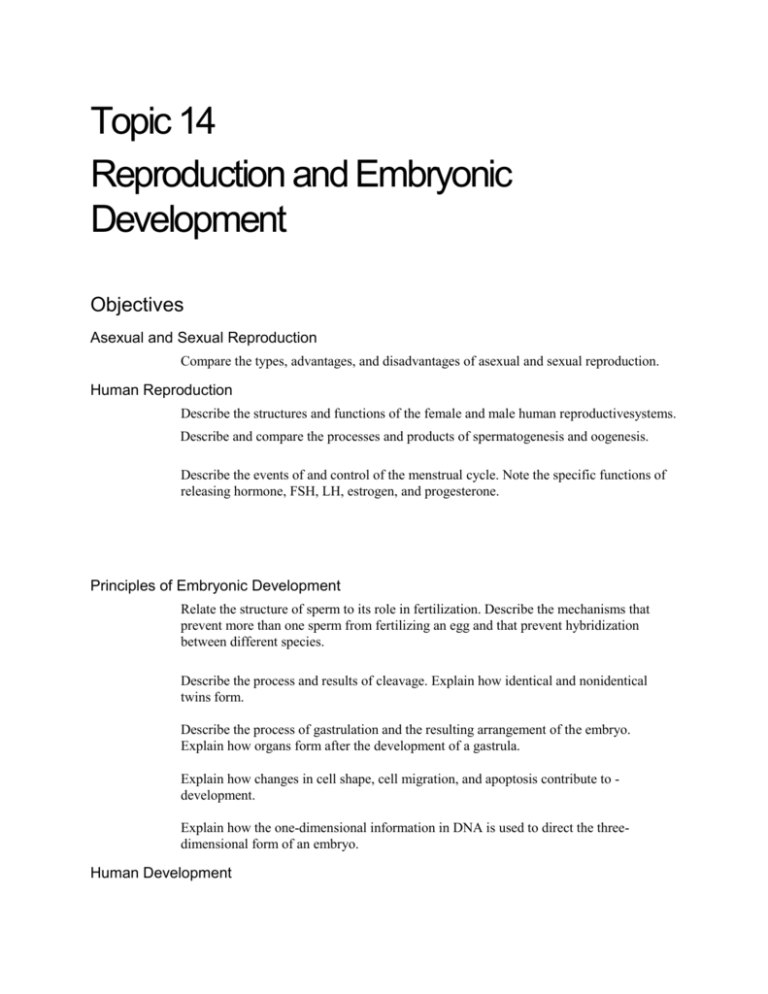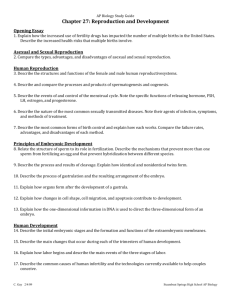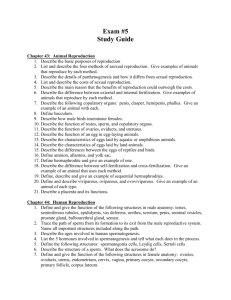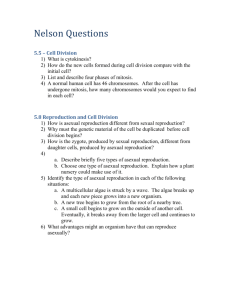Objectives 14
advertisement

Topic 14 Reproduction and Embryonic Development Objectives Asexual and Sexual Reproduction Compare the types, advantages, and disadvantages of asexual and sexual reproduction. Human Reproduction Describe the structures and functions of the female and male human reproductivesystems. Describe and compare the processes and products of spermatogenesis and oogenesis. Describe the events of and control of the menstrual cycle. Note the specific functions of releasing hormone, FSH, LH, estrogen, and progesterone. Principles of Embryonic Development Relate the structure of sperm to its role in fertilization. Describe the mechanisms that prevent more than one sperm from fertilizing an egg and that prevent hybridization between different species. Describe the process and results of cleavage. Explain how identical and nonidentical twins form. Describe the process of gastrulation and the resulting arrangement of the embryo. Explain how organs form after the development of a gastrula. Explain how changes in cell shape, cell migration, and apoptosis contribute to development. Explain how the one-dimensional information in DNA is used to direct the threedimensional form of an embryo. Human Development Describe the initial embryonic stages and the formation and functions of the extraembryonic membranes. Describe the main changes that occur during each of the trimesters of human development. Explain how labor begins and describe the main events of the three stages of labor. Describe the common causes of human infertility and the technologies currently available to help couples conceive.











